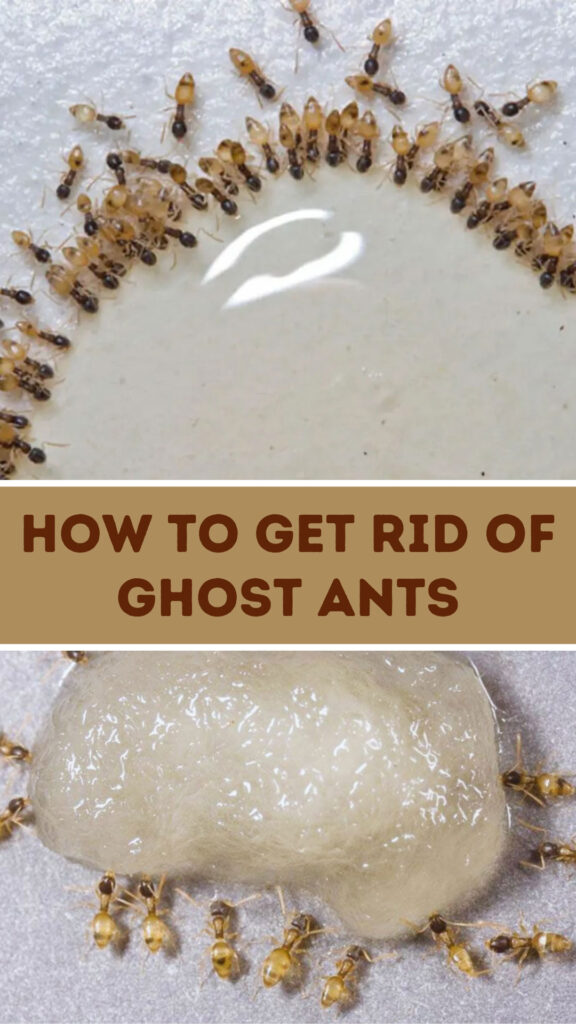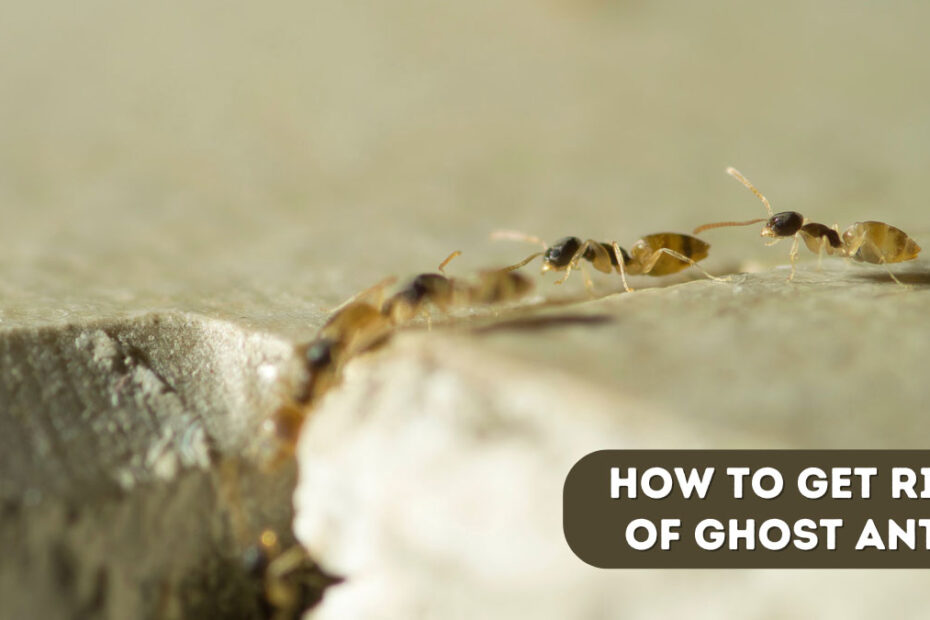Ghost ants, with their tiny size and translucent bodies, can quickly become an annoying presence in your home. They’re known for their ability to invade kitchens and bathrooms in search of food and water, making them a common household nuisance. If you’ve spotted these elusive invaders, you’re probably wondering how to get rid of them effectively.
Don’t worry, you’re not alone in this battle. Understanding the habits and preferences of ghost ants is crucial for effective eradication. With the right strategies and a bit of persistence, you can reclaim your space and keep these unwelcome guests at bay. Let’s jump into the best methods to eliminate ghost ants and prevent their return.
Key Takeaways
- Identify Ghost Ants: Ghost ants are small, translucent ants commonly found in kitchens and bathrooms. Recognize them by their dark head and pale legs and abdomen.
- Clean Home Regularly: Maintain a clean home by wiping down surfaces, sealing food in airtight containers, and promptly cleaning spills to remove food sources.
- Seal Entry Points: Inspect and seal gaps in doors, windows, and walls to prevent ants from entering. Keep exterior plants trimmed to minimize access points.
- Use Natural Remedies: Repel ghost ants naturally using essential oils like peppermint, tea tree, and citrus oils. Diatomaceous earth is also effective for killing ants safely.
- Consider Chemical Treatments: Over-the-counter ant baits and sprays can help eliminate infestations. For severe cases, professional pest control services are recommended.
- Long-Term Maintenance: Regularly inspect your home and monitor food storage practices to prevent ghost ants from returning.

Understanding Ghost Ants
Ghost ants are a common household nuisance, often found in kitchens and bathrooms. Effective eradication requires a clear understanding of their habits and behaviors.
What Are Ghost Ants?
Ghost ants, Tapinoma melanocephalum, are named for their translucent bodies. These ants are:
- Size: Approximately 1.3 to 1.5 mm in length
- Color: Dark head with pale, almost translucent, legs and abdomen
- Habitat: Prefer warm, humid environments
Ghost ants often invade homes in search of food and water. They’re attracted to sweets and are known for forming trails along walls and countertops.
Identifying Ghost Ant Infestations
Recognizing an infestation quickly is key to effective control. Indicators of a ghost ant infestation include:
- Sightings of Ant Trails: Visible lines of ants, particularly near food sources
- Small Piles of Dirt: Accumulations of soil or debris near nest sites
- Frequent Foraging: Ants found in sugar, syrup, or other sweet substances
Regularly inspect common entry points and feeding areas to catch infestations early. If you observe these signs, take immediate action to identify and treat the affected areas.
By understanding ghost ants’ appearance and behavior, you can better manage and eliminate these persistent pests from your home.
Preventative Measures
Taking steps to prevent ghost ants from invading your home can save you time and hassle. Implementing these measures will help create an inhospitable environment for these pests.
Keeping a Clean Home
Regularly cleaning your home removes the food and water sources ghost ants seek. Follow these guidelines to maintain a consistently clean space:
- Frequent Cleaning: Wipe down countertops, sweep floors, and remove food debris. Pay extra attention to kitchens and bathrooms.
- Sealed Containers: Store food, especially sugary items, in airtight containers. This stops ants from accessing their preferred food sources.
- Immediate Spill Management: Clean spills and crumbs right away. Even small amounts of food or liquid can attract ghost ants.
- Garbage Management: Empty trash bins regularly and use bins with tight-fitting lids. This reduces the likelihood of ants finding waste materials.
- Pet Food: Store pet food in sealed containers and avoid leaving it out overnight.
Sealing Entry Points
Blocking entry points deters ghost ants from entering your home. Take these steps to secure potential access points:
- Inspect and Seal: Check windows, doors, and walls for gaps or cracks. Use caulk or weather stripping to seal them.
- Screen Maintenance: Ensure window and door screens are in good condition without holes or tears. Replace damaged screens promptly.
- Foundation and Structural Gaps: Examine the foundation and other structural elements for openings. Seal cracks in the foundation with appropriate materials.
- Utility Entry Points: Inspect areas where wires and pipes enter the building. Seal these openings with expandable foam or caulk.
- Exterior Maintenance: Keep shrubs and plants trimmed and away from the house. This minimizes hiding and nesting spots near entry points.
Implementing these preventative measures creates a less inviting environment for ghost ants, reducing the chance of infestations.
Natural Remedies
Applying natural remedies can effectively combat ghost ants without resorting to harsh chemicals. These methods are suitable for homes with children or pets, aiming to maintain a safe and healthy environment.
Using Essential Oils
Essential oils can repel ghost ants, leveraging their natural properties. The most effective oils include:
- Peppermint Oil: Known for its strong scent and repelling properties.
- Tea Tree Oil: Antifungal and antibacterial, making it a multi-purpose solution.
- Citrus Oil: Derived from citrus fruits, offering a pleasant smell and repelling capabilities.
Steps for Application
- Prepare a Solution: Mix 10-15 drops of the chosen essential oil with 1 cup of water.
- Fill a Spray Bottle: Pour the solution into a spray bottle for easy application.
- Apply to Affected Areas: Spray along ant trails, entry points, and potential nesting sites.
Diatomaceous Earth Applications
Diatomaceous Earth (DE) is a natural, powdered substance effective in controlling ghost ant populations. This non-toxic material contains microscopic sharp edges that damage the ants’ exoskeletons, leading to dehydration.
- Purchase Food-Grade DE: Ensure that the product is safe for use in homes, around pets, and children.
- Identify Infested Areas: Focus on ant trails, entry points, and suspected nesting sites.
- Sprinkle DE: Apply a light layer where ghost ants are active, including baseboards, window sills, and under appliances.
By integrating essential oils and diatomaceous earth into your pest control regimen, you can manage ghost ants naturally and effectively.
Chemical Treatments
Chemical treatments serve as an effective method for eradicating ghost ant infestations. By utilizing chemical solutions, you can target ant colonies, ensuring thorough elimination.
Over-the-Counter Solutions
Over-the-counter solutions offer accessibility and convenience for treating ghost ant infestations.
- Ant Baits: These products attract ghost ants with a sugary substance laced with insecticide. The worker ants carry the bait back to the colony, which helps eliminate the entire population.
- Example: TERRO Liquid Ant Baits contain borax, effective in killing ants over time.
- Sprays: Insecticidal sprays can directly kill ghost ants on contact and provide a residual effect to keep them at bay.
- Example: Raid Ant & Roach Killer uses imiprothrin and cypermethrin to effectively kill ants.
Monitor treated areas to detect any ongoing activity and reapply as necessary until the infestation subsides. Always follow the manufacturer’s instructions to ensure safe and effective use.
Professional Pest Control Services
Professional pest control services deliver tailored solutions for severe or persistent ghost ant problems.
- Inspection: A professional will thoroughly inspect your home to identify the source of the infestation and assess the extent of ant activity.
- Treatment Plan: Based on the inspection, they will develop a customized treatment plan incorporating targeted chemical treatments that address your specific situation.
- Extermination: Professionals will use advanced insecticides and techniques not typically available over the counter. These may include perimeter treatments, bait applications, and direct nest eradication.
- Follow-Up: After the initial treatment, pest control services often include follow-up visits to ensure the ants are entirely eradicated and to prevent re-infestation.
Professional services can be more comprehensive, albeit more expensive than over-the-counter solutions. Consider hiring a reputable pest control company if over-the-counter treatments don’t resolve the issue.
Long-Term Maintenance
Implementing long-term maintenance ensures ghost ants don’t return after initial eradication. Combining regular inspections and vigilant food storage practices maintains a ghost-ant-free home.
Regular Home Inspections
Routine inspections of your home prevent ghost ants from re-establishing colonies. Systematic checks keep your environment unwelcoming for these pests.
Entry Points:
- Inspect and seal gaps in windows, doors, and foundations.
- Ensure window screens are intact and fitted.
Common Infestation Areas:
- Check behind appliances, under sinks, and along baseboards.
- Observe for new trails or nests around bathrooms and kitchens.
Monitoring Food Storage Practices
Proper food storage is crucial to disrupting ghost ants’ food sources. Adopting effective habits keeps your home less attractive to these invaders.
Storage Methods:
- Use airtight containers for all food, particularly sugary items.
- Regularly clean pantry shelves and discard expired products.
- Immediately clean spills and crumbs from countertops and floors.
- Ensure garbage cans are sealed and emptied frequently.
By implementing regular inspections and careful food storage, you create conditions that prevent ghost ants from making their way back into your home.
Conclusion
Dealing with ghost ants requires a comprehensive approach that combines cleanliness, preventative measures, and effective treatments. By maintaining a tidy home sealing entry points and using natural or chemical remedies you can successfully manage and eradicate these persistent pests. Don’t hesitate to seek professional help for severe infestations to ensure your home remains ant-free. Keep up with regular inspections and proper food storage to create an environment that’s inhospitable to ghost ants and enjoy a pest-free home.
Frequently Asked Questions
What are ghost ants?
Ghost ants, scientifically known as Tapinoma melanocephalum, are small, translucent insects that are attracted to sweet foods and thrive in warm, humid environments. They are approximately 1.3 to 1.5 mm in length, with a dark head and pale legs and abdomen.
How can I identify a ghost ant infestation?
Signs of a ghost ant infestation include visible ant trails along walls and countertops, small piles of dirt near nest sites, and frequent foraging in sugary substances. Regular inspections can help catch infestations early.
What preventative measures can I take to avoid ghost ant invasions?
To prevent ghost ants, keep your home clean by frequently wiping surfaces, storing food in sealed containers, managing spills promptly, and properly disposing of garbage. Sealing potential entry points by caulking gaps and ensuring screens are intact is also crucial.
Are there natural remedies to repel ghost ants?
Yes, essential oils like peppermint, tea tree, and citrus oils can repel ghost ants when mixed with water and sprayed in affected areas. Food-grade diatomaceous earth can also be used to damage ants’ exoskeletons, leading to dehydration.
What chemical treatments are available for ghost ant infestations?
Effective chemical treatments include over-the-counter solutions such as TERRO Liquid Ant Baits and Raid Ant & Roach Killer, which target ants with insecticide-laced substances. Monitor treated areas and reapply as needed.
When should I consider professional pest control services?
Consider professional pest control services for severe or persistent ghost ant infestations. Professionals offer tailored solutions, thorough inspections, and customized treatment plans to ensure complete eradication.
How can I prevent ghost ants from re-infesting my home?
To prevent re-infestation, conduct regular home inspections, check entry points and common infestation areas, and use airtight containers for food storage, especially for sugary items. Promptly clean spills and crumbs to disrupt ghost ants’ food sources.
